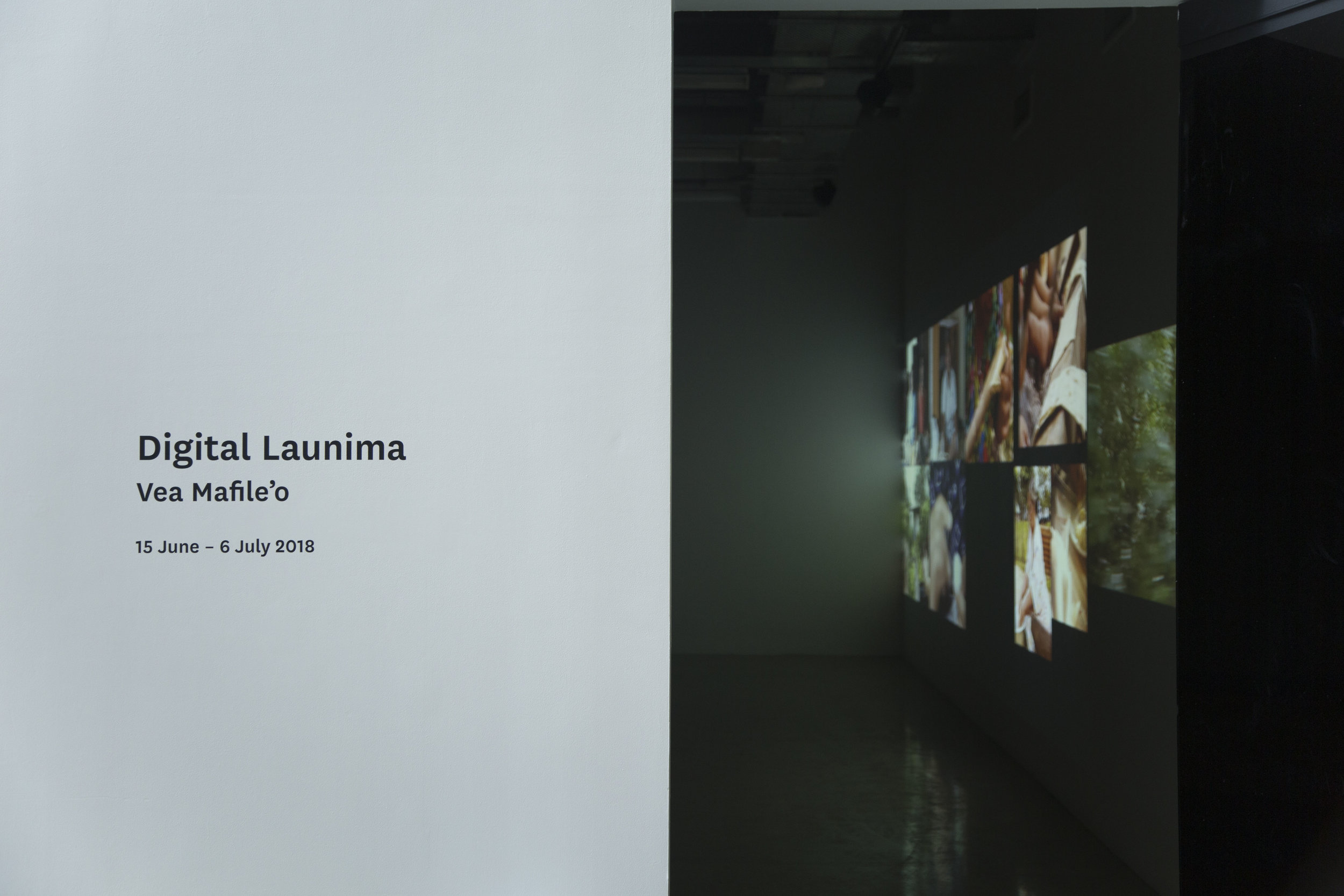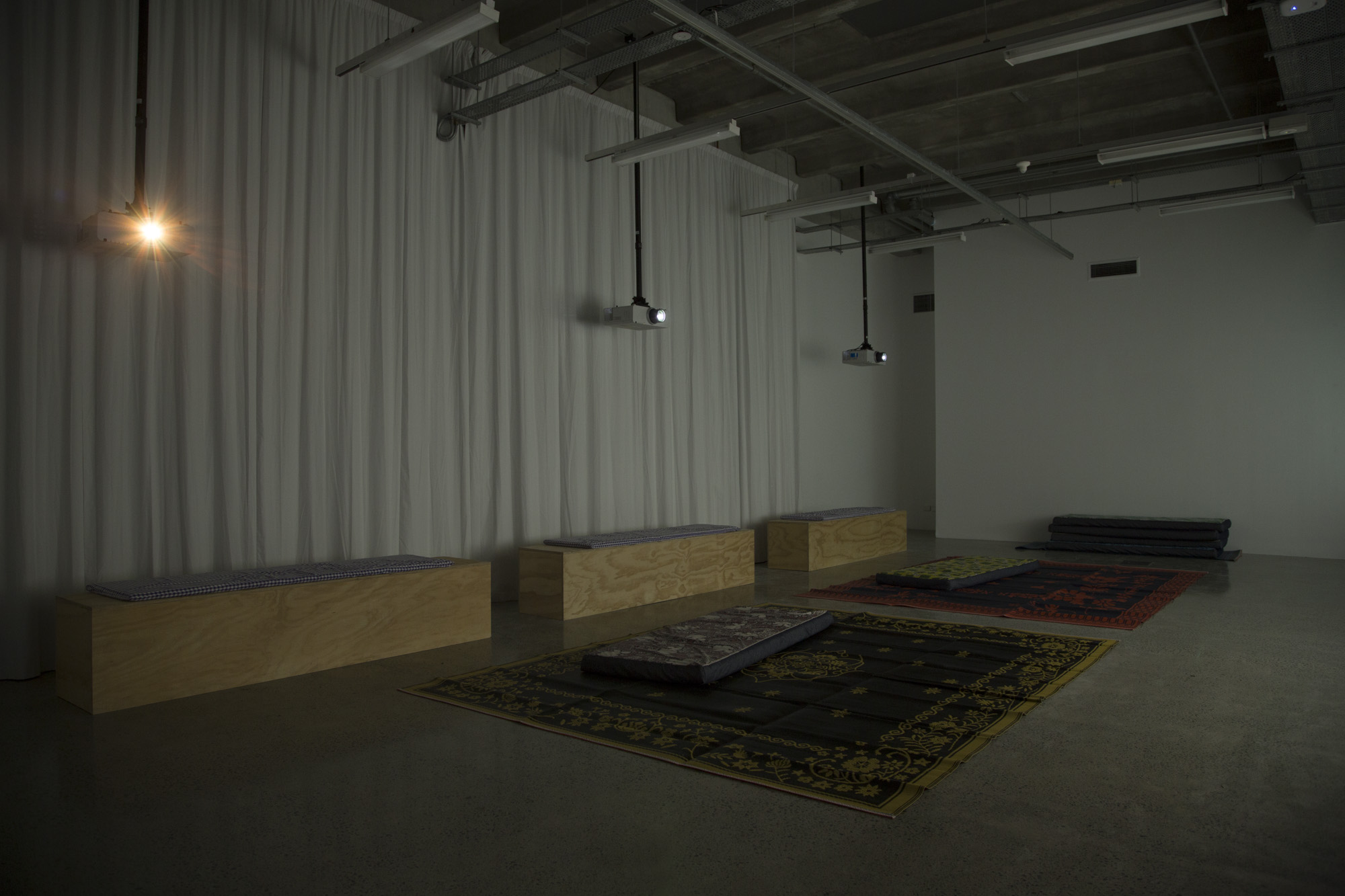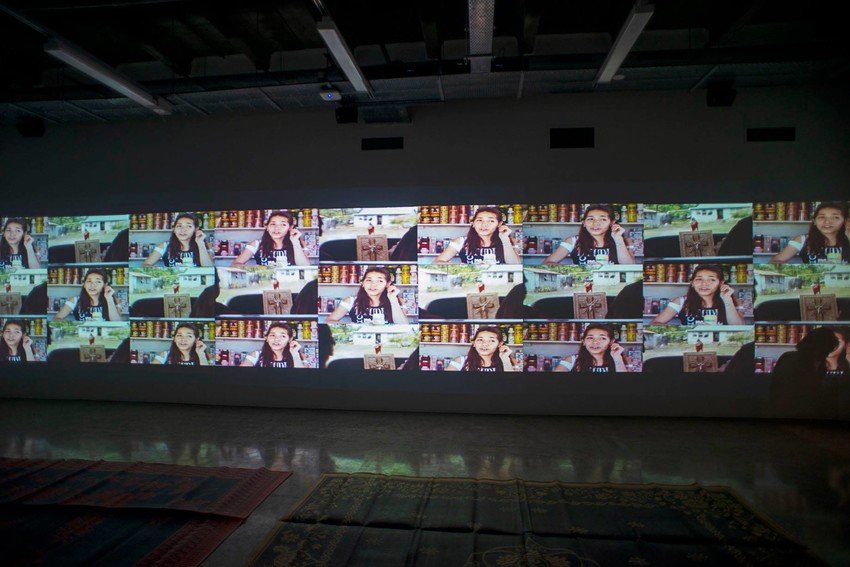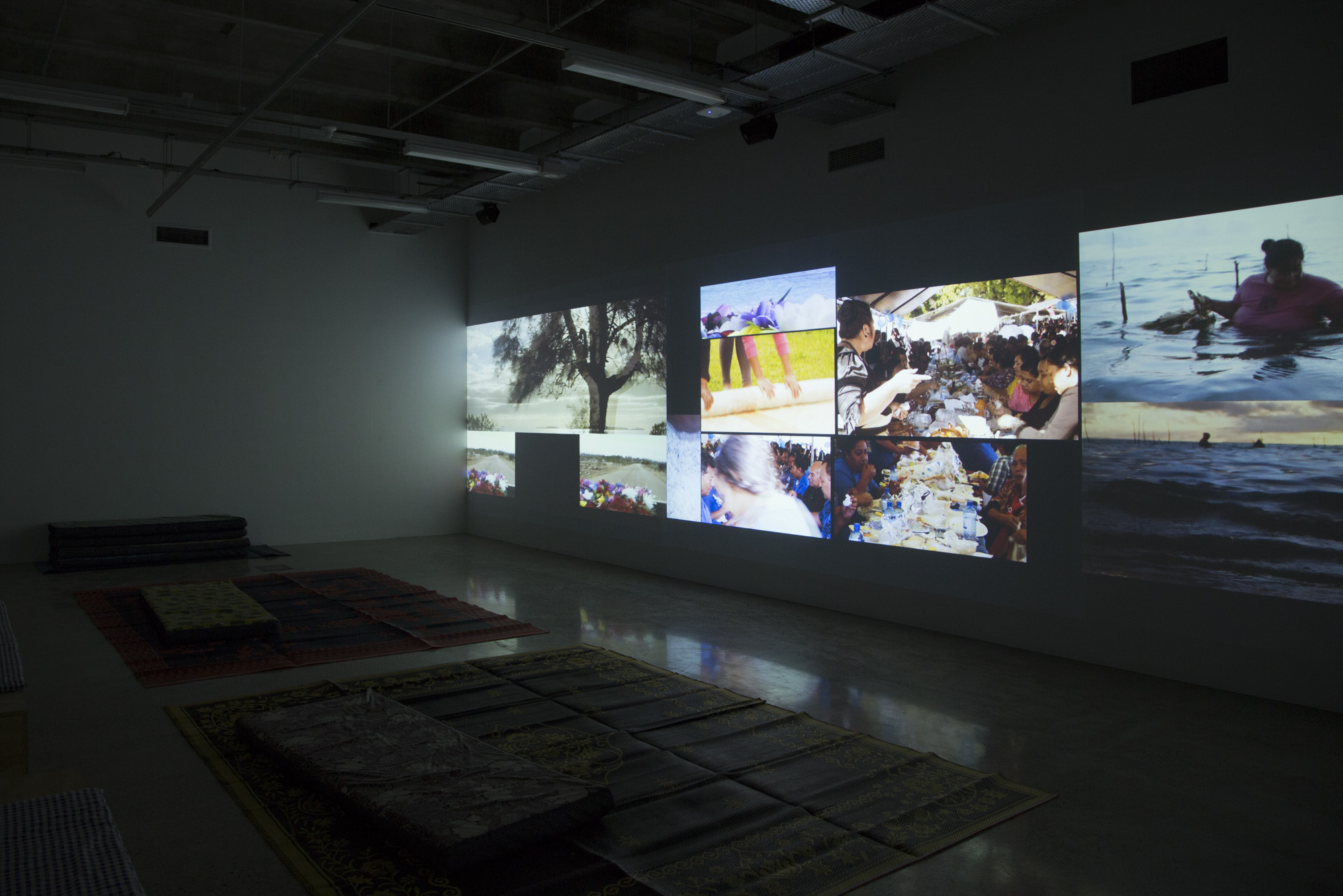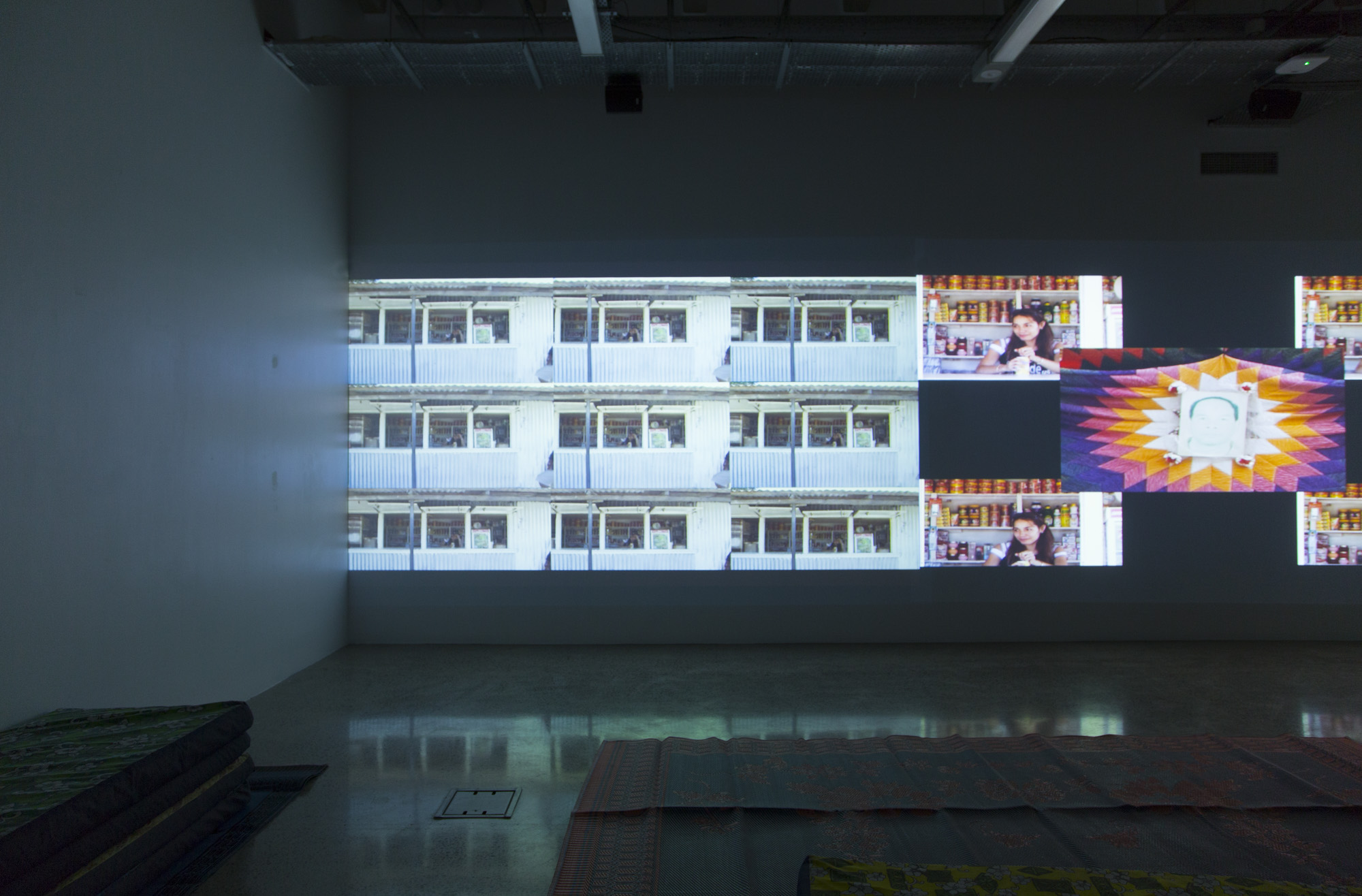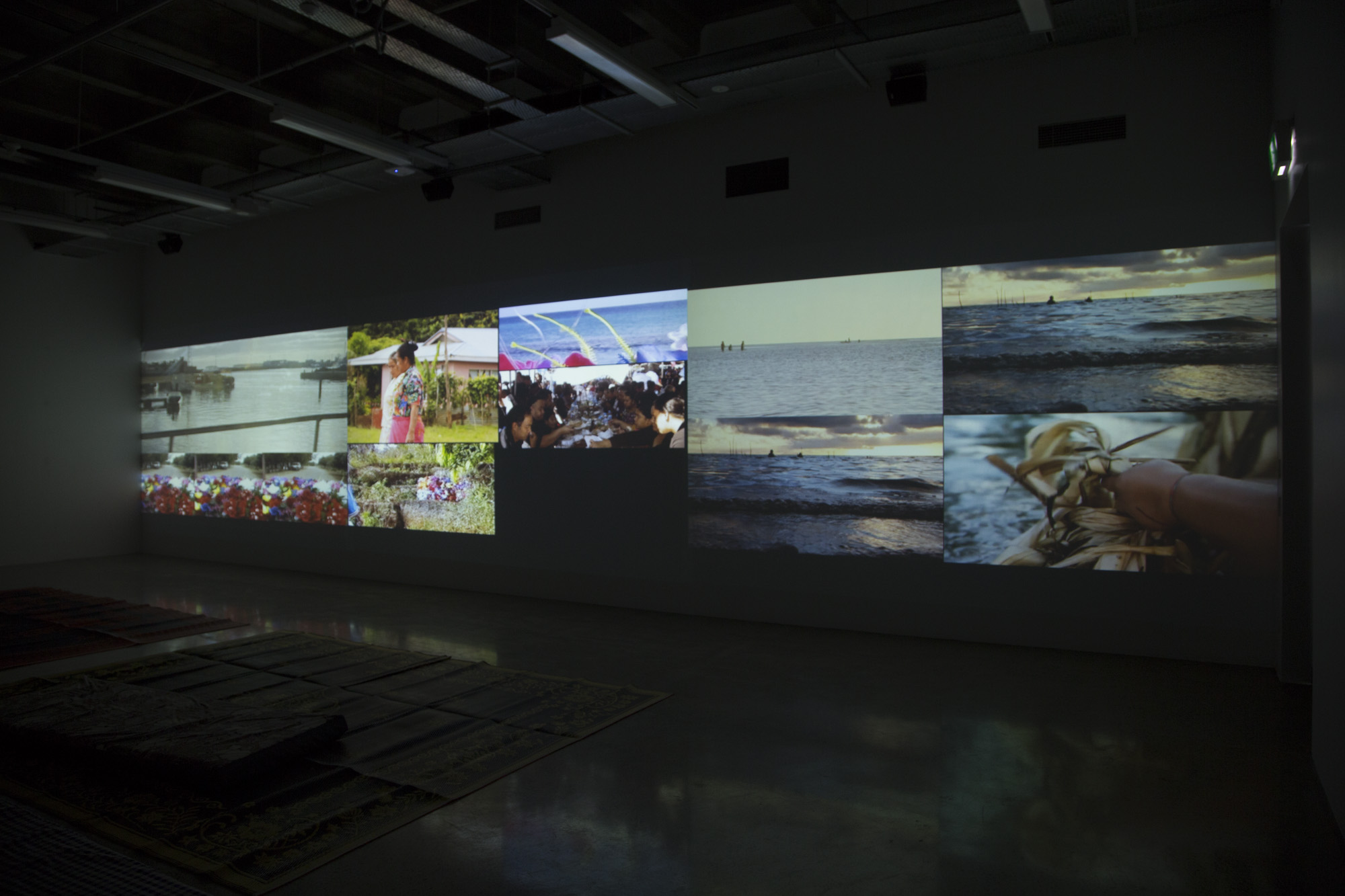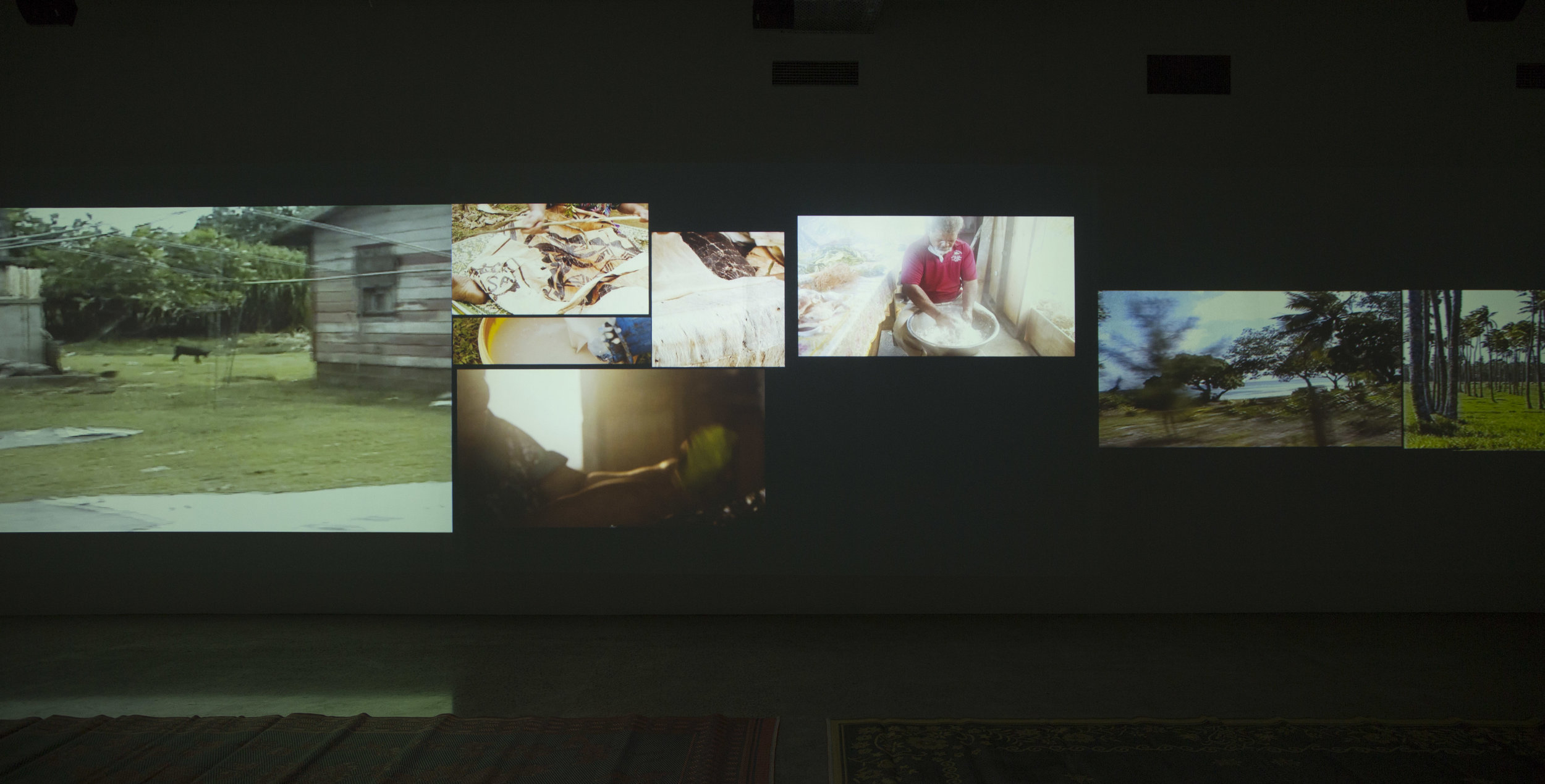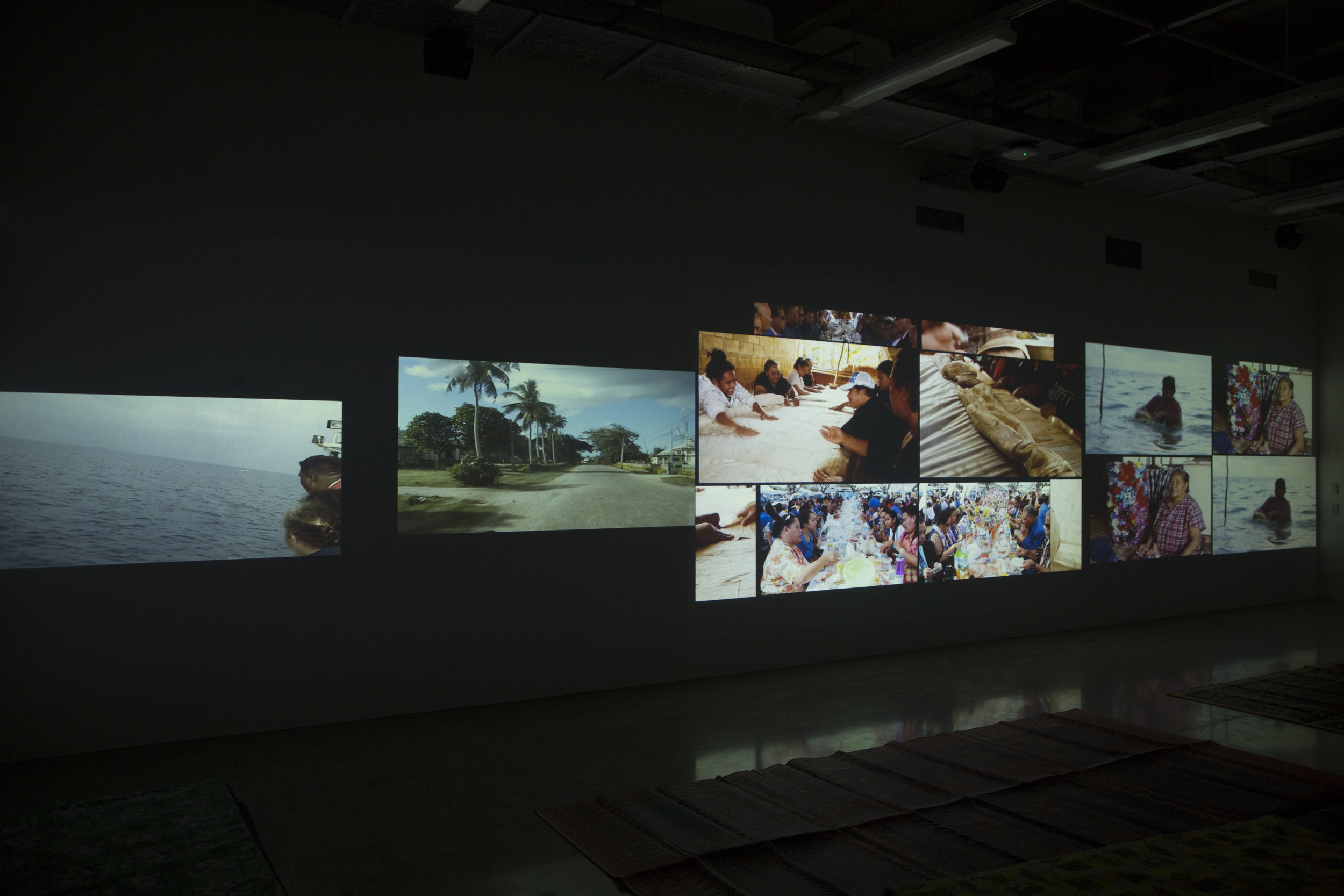Vea Mafileo: Digital Launima
Vea Mafile'o, ‘When will I see you again’, 2018. Digital Launima (installation detail). Photo Courtesy: Emily Mafile’o
15 June - 6 July 2018
St Paul Street Gallery
Mining an archive of raw footage that spans almost fifteen years, Vea Mafile’o renders a digital ngatu launima (decorated barkcloth) that both conflates and acts as an index of time. Ngatu launima is one of a variety of Tongan textiles that commemorate historical events and genealogical histories.[1] Much like her textile reference, there is a sense of scale and generosity in this work. The three-screen projection is a cascade of visual imagery and sound drawn from her return trips to the Kingdom of Tonga from as early as 2003.
Unique juxtapositions oscillate between past and present as well as personal and collective histories. Mafile’o draws on a diverse range of imagery; from the 2016 Tupou College Toloa Sesquicentenerary juxtaposed with a koka’anga (female collective of barkcloth-makers) creating a launima in the village of Lapaha. Within these public celebrations are more personal narratives that reflect Mafileo’s experiences. In one part of the work scenes of the Tongan landscape are layered over with a recording of Mafile’o’s late Aunty Ana sending best wishes to family in Aotearoa.
Mafile’o’s excessive mise en scène slices through life in Tonga- from the ceremonial to the everyday. Some of the most rewarding snapshots of village life include the local village shop. One sequence depicts a woman looking out beyond the small island shop front and she begins to sing Whitney Houston’s 1992 rendition of I will always love you. Her compelling performance, where one might begin to consider how identities can be created and performed, is only broken by the reality of a customer who walks into the frame and starts to demand her groceries.
The work ends with the sound of the 1973 tune When will I see you again by The Three Degrees which plays as Mafile’o’s nephew Emil and sister Elizabeth are depicted sitting alongside their elder relatives as they pose formally for the camera. Her family stands at the doorway of their home and begin to wave goodbye, not to camera, but to those behind it.
This re-presentation of documentation becomes a screen memory, of sorts, that intimately farewells multiple journeys, and people who have passed, as easily as it evokes a sense of longing. Mafile’o works innovatively with concepts of time, in a way that looks forward and backwards simultaneously so that the future is as open as the past and both can be rewritten in tandem.
Ane Tonga
[1] Ngatu launima (decorated barkcloth) is revered for its size. Launima indicates the length of fifty individual pieces sized between 45-60 centimetres.
Download Exhibition Text (above): Ane Tonga, Vea Mafile’o: Digital Launima.
Reviews
Humans of the Islands: Vea Mafileo, Coco Talanoa, The Coconet TV, 2018.
Lana Lopesi, Digital Launima, UN Projects, 2018.
